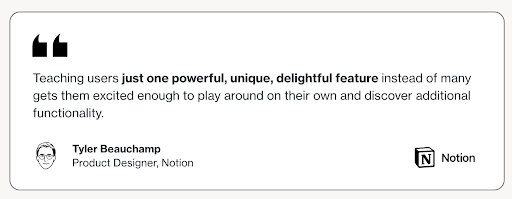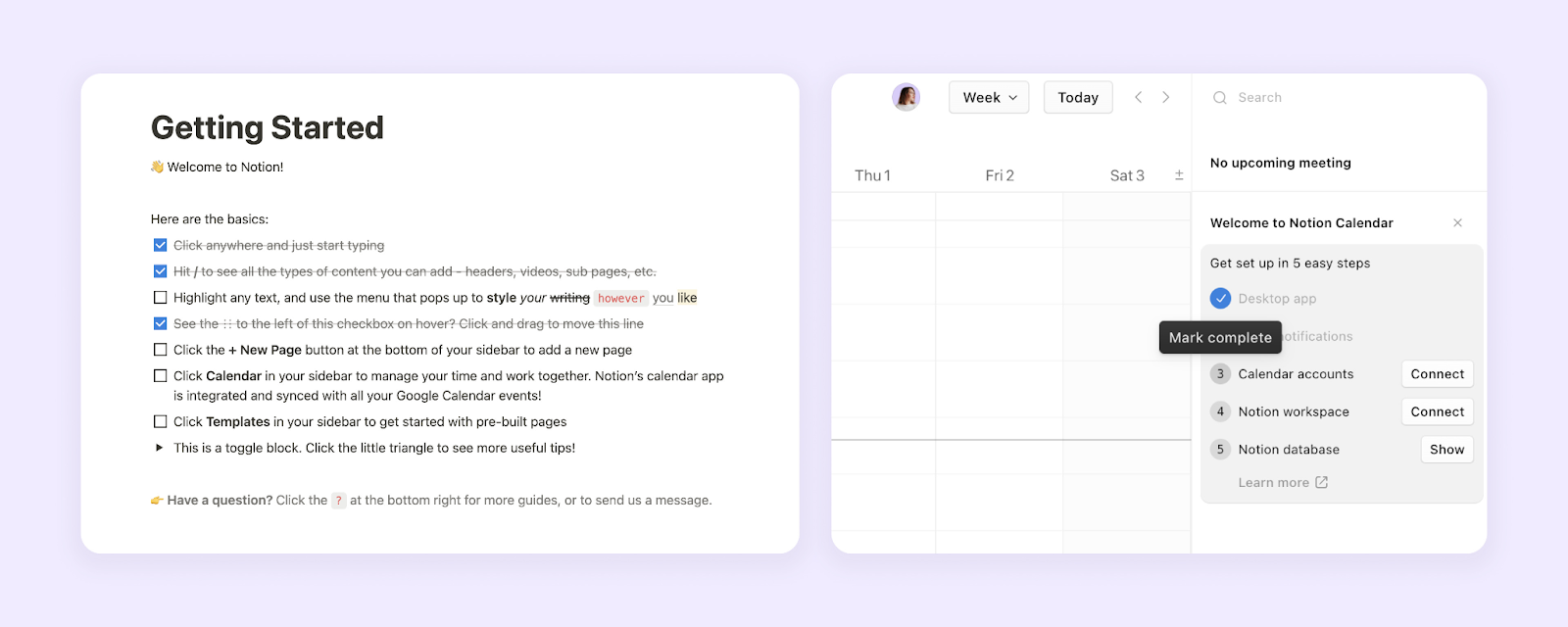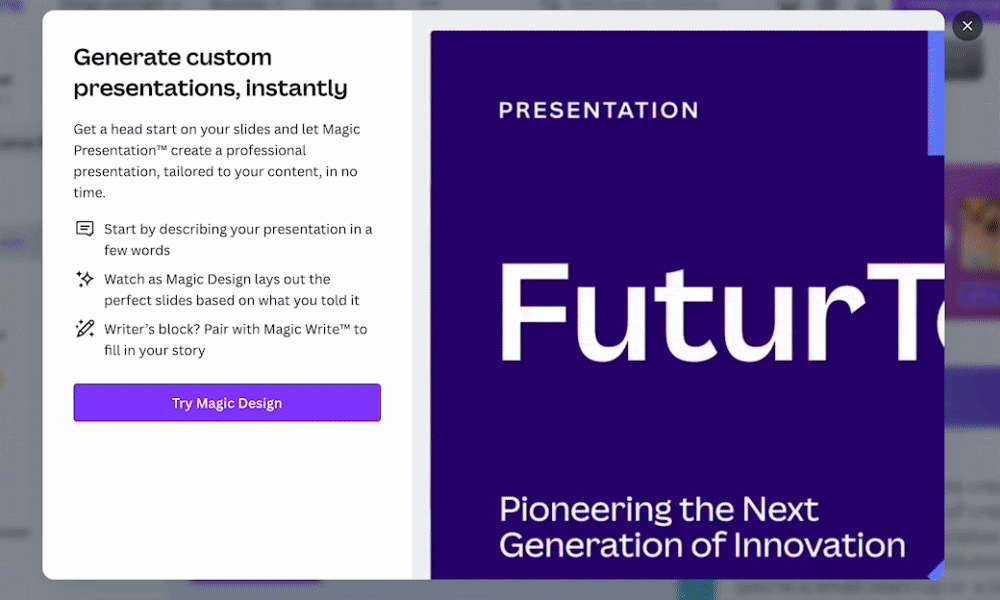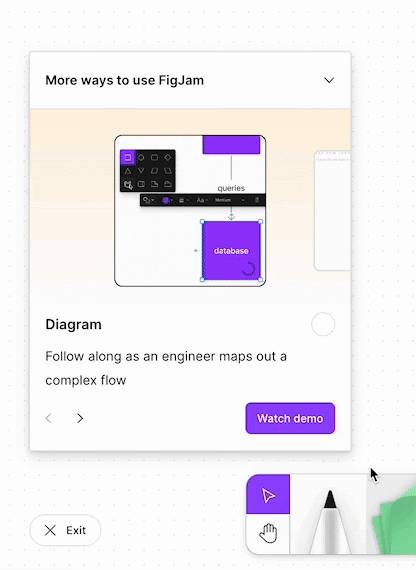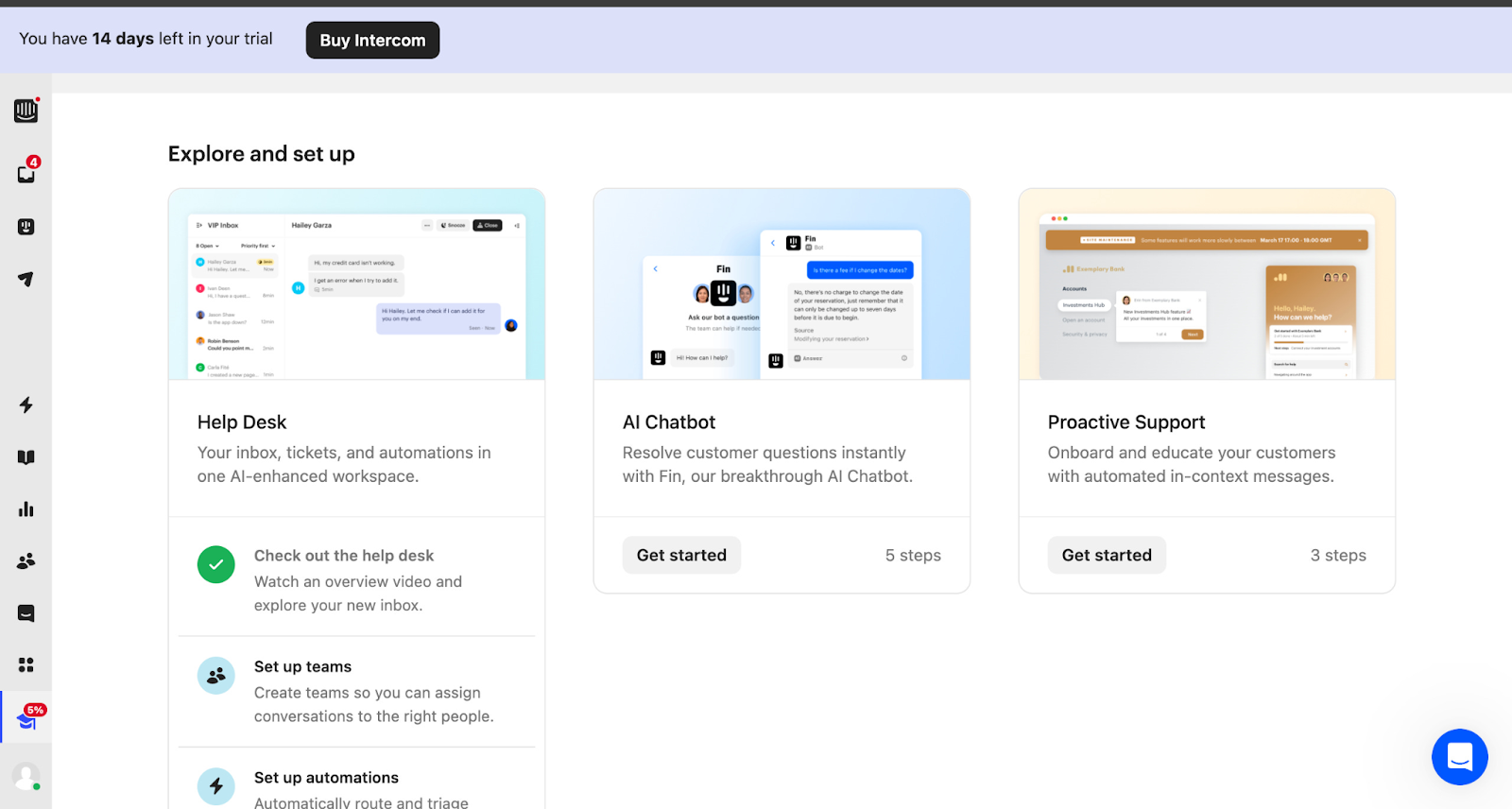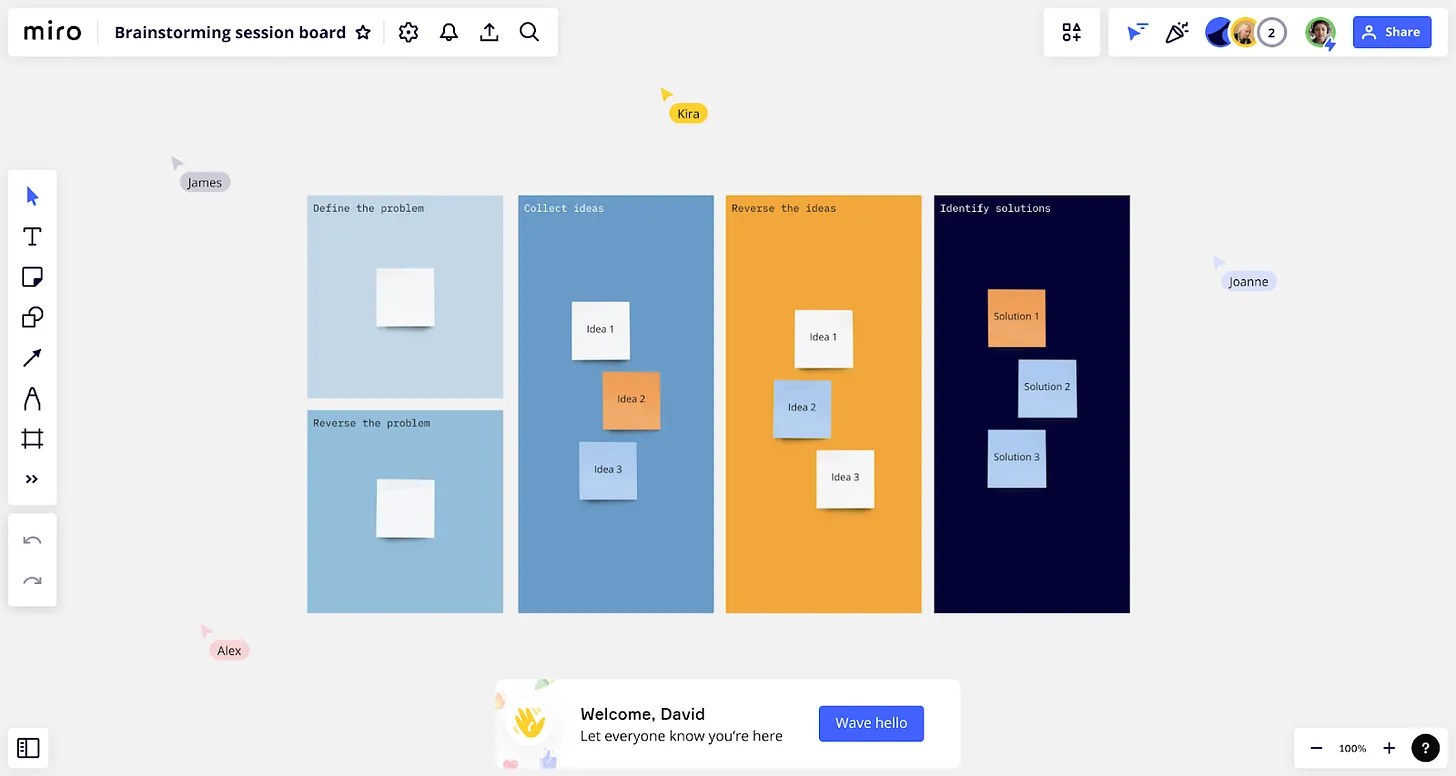High-Quality Principles to Support Your Product-Led Growth
The term “PLG” or “Product-Led Growth” starts with the word “Product,” meaning the product itself and its quality create a necessary foundation for Acquisition, Activation, Monetization, and other growth levers.
Simply, if the product itself does not provide an intuitive user experience, it is not self-servable. If the product is not self-servable, it can’t successfully apply the PLG approach.
Growth teams are working on PLG strategies and delivering high-quality experiences to end-users. Historically, Growth teams gained the reputation of optimizers for higher speed and sacrificing core product experience. I’d like to break this stereotype.
If we just take a moment to reflect on products that achieved real success, these products have both components: a high-quality user experience and ethical PLG strategies.
Here are some examples of companies with both high-quality UX + PLG:
- Notion: Great UX for content organization + PLG freemium.
- Canva: Variety of use cases for creators + PLG for individuals and teams.
- Figma: Advanced functionality in a browser + PLG network effects.
- Intercom: Enhanced UX for a complex platform + PLG on top of Sales-led motion.
- Linear: Clear UX for product development + PLG with powerful paid features.
- Miro: focus on intuitive experience for non-designers + PLG from the early days.
I decided to take a deeper look into these products and uncover how they define and deliver high quality.
Try Userpilot Now
See Why 1,000+ Teams Choose Userpilot

1. Notion
I was an early adopter of Notion since 2017 and observed how the team progressed through Freemium and evolved to the current state of a $10B valuation. However, I was more interested in finding some principles that guided the team to focus on quality.
What makes Notion a high-quality product?
- Delivering on product promise: Notion has been focused on creating an “all-in-one workspace”, and while communicating the value across different marketing surfaces, Notion delivered its value to end users before starting to build a PLG motion.
- Reducing distractions: At different steps of the journey, the product makes sure to keep the focus on the work, and not on the product. The minimalist interface supports that principle.
- Ease of use: The building blocks and new formatting UX required a bit of a mental model shift, but the UX was designed in a very intuitive way. Despite the novelty of this way of organizing documentation, the “ease of use” helped to achieve a high level of product adoption.
How does Notion deliver on that promise? I checked their main product onboarding and a new Notion Calendar flow to uncover.
A checklist is one of the most familiar patterns for onboarding and activation. Notion is utilizing it in various ways:
- “Learn by doing” while onboarding through the “Getting Started” page.
- Applying a familiar checklist pattern in Notion Calendar.
- Creating a limited number of steps, and each of them is connected to the most important features in the first experience. Eventually, using this set of experiences leads to achieving an “Aha! moment”.
It’s easy, not distracting, and each step in the checklist reminds the user about the core value the product promised to deliver, an “all-in-one workspace”.
2. Canva
Canva is a tool for visual, content, and brand creators with a valuation of around $39B.
When we spoke to Iain Dowling (Growth Design Leader at Canva) on Growthmates, he mentioned the role of data insights in their product work:
“We look for quality data insights, both qualitative and quantitative. So we’re still building our research team for Growth at Canva. It’s small but mighty, but we have a very, very strong data team, and that data team started in the Growth team, actually, years ago at Canva.”
– Iain Dowling, Growth Design Leader at Canva.
What makes Canva a high-quality product
- Visualizing product value: Canva is a tool for creators who are primarily visual thinkers. So it’s very important to make sure that the product value is represented in a high-quality visual way, and then make sure to deliver this value and help non-designers produce better outcomes.
- Personalizing using data insights: Such a horizontal platform for a variety of use cases (docs, whiteboards, presentations) requires deeper segmentation and personalization to ensure users achieve Activation. Canva is doing it from the earliest steps of the journey, showing different products on the website, asking users about their needs, and then providing categorized templates inside the product.
A visual way of representing different features is definitely at the core of the product approach. However, it’s not just showing users the value but also triggers them to interact and “play” with different functions in a safe environment.
3. Figma
Figma became a go-to tool for designers and product teams across the world and was almost acquired by Adobe with a $20 billion valuation.
I’ve been using Figma since 2016 and still rely on it heavily when creating any hands-on craft. Based on my personal experience, I can ensure that high quality lies in the DNA of the product.
What makes Figma a high-quality product
Nowadays, it’s hard to find products that publicly share their quality principles, but Figma does. Let’s dive deeper into each of their principles:
- Professional (Powerful, Precise, Systematic). Figma stood out at the beginning by providing powerful functionality in the browser to design professionals, and it was a game-changer for design collaboration.
- Approachable (Predictable, Biased toward simplicity, Natural mental models). We can see the pattern of simplicity as a principle. Being mindful while introducing new patterns, and actively pushing the tool toward simplicity, while it naturally bends toward complexity.
- Thoughtful (Responsible, Detail-oriented, Respectful). The principle that resonated the most is Figma’s commitment to “research and test to understand true intentions of a user, not just assume”. This is a strong point that quantitative A/B testing is not enough if you want to deliver a successful product with the PLG model.
Figma combines intuitive navigation, uses simple copy for use case explanation, and applies visual guidance in one place. You can see the sense of progress, expand it to the large mode, and get back to this anytime after your first session with the product.
4. Intercom
Intercom is currently an all-in-one AI customer service platform that has existed on the market since 2011.
The product had a lot of significant changes in its positioning, as well as shifts from pure Sales-led motion to a combination with PLG. Intercom also accomplished $50MM ARR in under 5 years, making it one of the fastest-growing products on the market.
Recently on Growthmates, I’ve been talking to Thomas Rimmer, Design Director at Intercom, where he shared their philosophy when it comes to product quality and decision-making:
“If we’re not being helpful, then it shouldn’t exist in the product. If it isn’t adding value to a user, then it shouldn’t exist, or it should be changed in some way.”
– Thomas Rimmer, Design Director at Intercom.
What makes Intercom a high-quality product
Intercom has a set of principles divided by categories: R&D, Product Design, and Engineering.
Let’s dive into some of these principles:
- What you ship is what matters. This principle is well connected to the philosophy that Thomas shared. If the experience is not helpful or is not adding value, it shouldn’t exist.
- Follow fundamentals. If there are familiar experience patterns for the target audience, there’s no need to re-create the wheel, unless this is the differentiator where you need to be inventive.
- Make it feel personal. Adding a flavor of a human connection, not just talking to users as an emotionless interface.
For highly complex B2B products that are used to onboard users through the traditional human-touch approach with the help of Customer Success, it can be quite challenging to transition to a self-service approach. Intercom is splitting the setup into several modular chapters and steps, as well as adding a human connection through copy and interface to re-create this familiar demo experience with Customer Success.
5. Linear
Linear is a relatively young product that positions itself as a tool for modern software development to streamline issues, sprints, and product roadmaps. I’ve been interested in following their journey from the early days, as Karri Saarinen (CEO and Co-Founder at Linear) has a design background (ex-Airbnb).
What makes Linear a high-quality product
When diving deeper, I uncovered a Linear Method where the company explains its unique principles and practices. It’s quite interesting that the team is not relying on A/B-testing for decision-making, and it’s probably a smart decision for their current scale to keep control over a quality bar. Let’s dive into some components of the “Linear method”:
- Aim for clarity. Despite the complexity of software products, Linear seems to be clear, consistent, and intuitive. It also has this pleasant feeling like when you’re interacting with high-quality Apple hardware products, but here you can feel it in Linear software.
- Simple first, then powerful. This principle is connected to personalization for teams of different sizes that have different problems to solve and, hence, require different functionalities. Progressive disclosure can also be another tactic to use — Linear doesn’t seem very complex at the beginning, but while progressing through the experience, the user can uncover a lot of powerful features (and it’s smart to make them available in higher-tier options).
Simplicity is at the core of this solution. The product is relying on the “power of defaults” by providing the easiest option to invite team members through the link. Finally, this experience is consistent throughout different touchpoints: during the Sign-up flow, in the Onboarding checklist, and as a part of the core experience.
6. Miro
Miro is a collaborative whiteboarding platform that is used by 50+ million users worldwide and has a $17.5 billion valuation.
What makes Miro a high-quality product
When it comes to my time at Miro, the focus on quality was just a part of internal DNA. There’s an interesting Mona Lisa principle described in “How Miro builds product”: “Simply put, everything we ship should be like a Mona Lisa painting, something we’d be proud of putting our name on. When you look at a painting, you can easily say that something is a masterpiece and something is definitely not; the same is true with the product.” The whole team was deeply focused on shipping high-quality experiences to customers, and inside Growth org, I’ve led Design review sessions several times per week to maintain a quality bar in a fast-moving experimentation environment.
A step ahead of that is creating a “delightful Aha! moment”, meaning exceeding user expectations, while still delivering on the promise. The “Say Hi” experiment is a simple “delightful experience” that can exceed user expectations about a traditional collaboration experience.
Key Takeaways
If you reached this point in this story, you probably started noticing patterns in how different companies approach high quality. Let’s look at 3 themes I identified:
- Use simplicity as a principle, as your product will naturally bend toward complexity. For B2B tools that are growing by adding functionality, it’s quite common to become complex over time. Then these tools encounter the challenge of creating an efficient self-serve user onboarding. Tools like Figma and Linear could easily land in this category if they didn’t focus on simplicity from the first day. It can cost you a lot of effort in the future to onboard users at scale into a complex product if you don’t keep complexity under intentional control.
- If your product delivers high quality on its promise, you can rely on the product itself for user onboarding. For reliable PLG-motion, your product needs to be self-servable, so users can assist themselves with everything hands-on. In this case, you can create onboarding experiences that are embedded into the core product, like Notion and Canva examples.
- Personalizing experience is a way to simulate the human connection that self-service products usually miss. We don’t want our users to feel lost and isolated inside digital products, especially when users are exploring the product for the first time. Personalization can be delivered in different shapes — calling users by name, suggesting templates, or even involving familiar human voices and faces while guiding users through your platform.
Join my course, User-Centric Product-Led Growth: Build Your Roadmap.
Build your Growth roadmap from Quick Wins to Big Bets by combining behavioral science and proven growth strategies to drive impact and delight.


